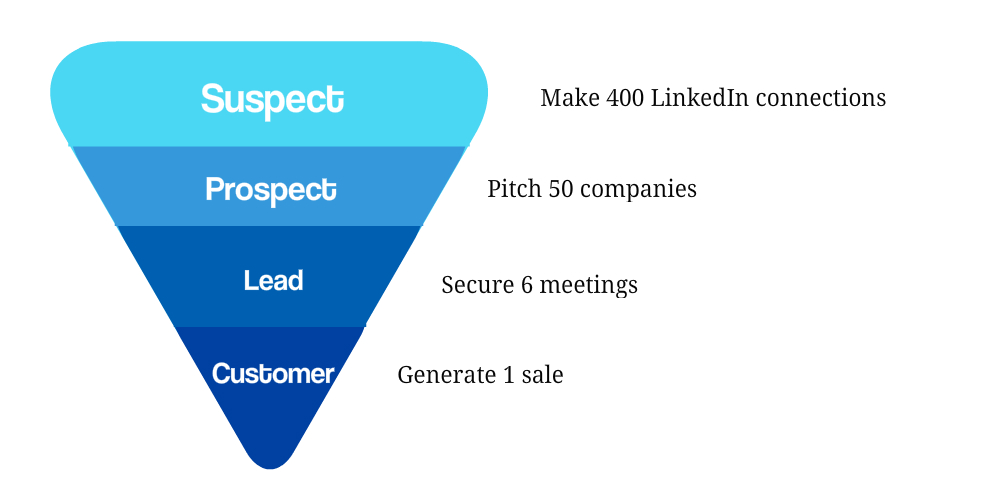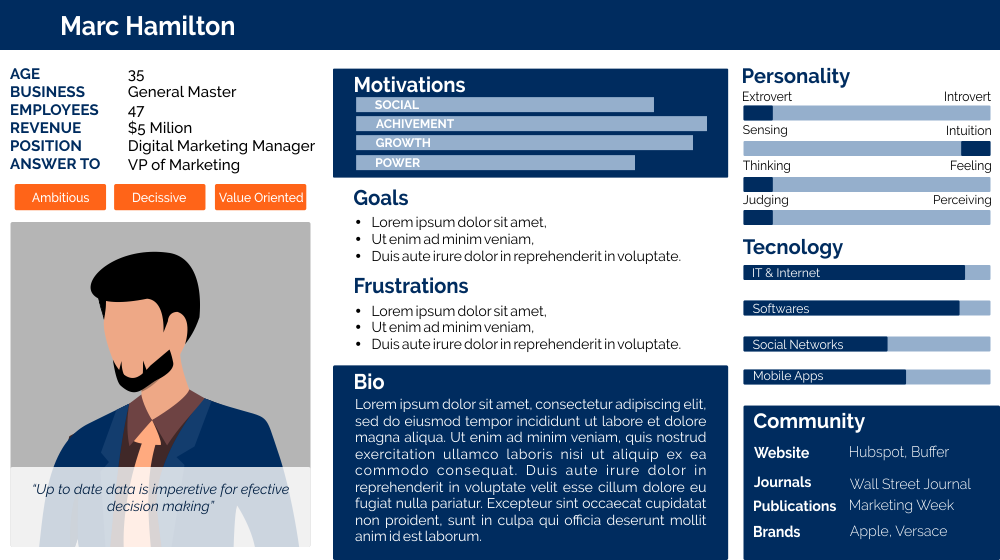If you’re running a B2B business or an agency, or you are in a managerial position, you will understand how difficult it can be to get new customers for your business.
You are not alone. Most companies face this struggle.
According to a 2018 Hubspot report, the biggest struggle agencies faced was finding new customers. It’s a study that nicely reflects the situation for B2B customers.
 Source: Hubspot
Source: Hubspot
There are, of course, a variety of approaches that businesses take to generate fresh leads. In this guide, I will show you how to use LinkedIn to get new customers for your business. Let’s start at the very beginning.
Why You Should Have a LinkedIn Marketing Strategy
There are a half dozen major social networks. While LinkedIn might not be the biggest, it is undoubtedly the most relevant social network for business professionals in the B2B space.
LinkedIn has over 610 million members. Of which, approximately 121.2 million are active daily users. A proportion of these members will work for and represent the kind of clients your company is targeting. This makes it the perfect place to search for leads.
So now that we’ve touched on the obvious why LinkedIn is a valid marketing channel let’s get practical. What follows is a five-step LinkedIn marketing strategy you can use to generate leads for your business.
Step 1: Define your marketing goals
If you plan to use LinkedIn as a marketing channel for your business, you need to set clear marketing goals. Having clear goals in place will help you quantify success.
For example, this could be your LinkedIn sales target:
- Sign up one client per quarter from LinkedIn
To achieve that target, you’ll need to set some sub-goals. These are the actions you need to complete to achieve your objective. For example, to secure one new client per quarter from LinkedIn, you might have to:
- Secure a meeting with six companies
- Pitch to representatives from 50 companies
- Connect with 400 relevant marketing managers
You can think of this a bit like a marketing funnel. I’ll walk you through how to complete each of these targets in the following sections.

Your LinkedIn marketing goals should be ambitious but not unrealistic. You want targets you’d struggle to achieve. This way, you’ll feel good about actually achieving them.
Step 2: Create a Customer Persona
Now you have your marketing goals in place it’s time to get to work.
A large part of LinkedIn marketing involves growing a network of connections and followers. While getting people to follow you takes time, connecting with people is pretty straightforward. For this LinkedIn marketing strategy, what you want to do is connect with people who work for companies you’d like as clients or customers.
You probably have a good handle on the type of companies you’d want as customers. If you don’t, create a customer persona. Creating a customer persona won’t take you long. You need to define:
- The niche you are targeting (you could be targeting multiple niches)
- The size of the company (either by revenue or number of employees)
- Who in the company makes purchasing decisions (head of sales, for example)
If you want to go in-depth, you can spend time fleshing out your persona. I’ve shared a template you can use for your customer persona below.

So that’s the customer persona covered. Now we can talk about how to grow your LinkedIn network.
Step 3: How to Grow Your LinkedIn Network
There are two parts to growing a LinkedIn network. The first thing you need to do is create a list of companies that would make great clients. You then need to identify who makes the purchasing decisions in the company.
There are a lot of resources you can use to build up your list of potential clients. Below are a couple of obvious places to look based on the size of the company you are targeting:
- Google My Business: great for any firm looking to work with local businesses. For example, law firms, or accountancy firms
- Business Lists & Awards: things like the Inc 5,000, roundups of the best firms in an area made by business publications, and local business awards are great places to find suitable scale-ups and larger firms
- Stock Markets: for huge companies and multinationals, you can’t go wrong by reviewing the firms listed on national stock markets
List all of the companies on a Google Sheet. Once you’ve finished this exercise, it’s on to stage two. You need to identify the person or persons in each company to befriend.

LinkedIn makes it easy for you to connect with people.
First, look up the company. Then, on the ‘people’ tab, enter the relevant job title — for example, CEO or Head of Marketing. For small firms, connecting with one decision-maker is enough. For larger companies, note down the names of at least a few key people.
At the end of this process, you’ll have a Google sheet that looks something like the one below.

Now, send a connection request. You don’t need to add any personal message.
By sending out these connection requests daily, you’ll slowly build out your professional network. So that covers how to grow your LinkedIn network.
Step 4: How to Engage With Your New Connections
I’m going to keep this section brief. There are plenty of great articles online, like this one, that cover how to engage with people on LinkedIn. Mostly, it’s just common sense.
Spend a little time every day interacting with your professional network. Like the status updates people make, leave comments, share interesting articles, etc. At the same time as you do this, post interesting and relevant content on your feed.
 Source: Giphy
Source: Giphy
Yeah, talk, talk, talk…
Over time, through maintaining and growing this professional network, you will naturally receive inquiries from companies interested in your services.
To get more customers, you need to reach out and message people.
Step 5: How to Pitch Your Services on LinkedIn
The final step of this LinkedIn marketing strategy covers how to pitch to potential customers. You’ll make the initial inquiry through LinkedIn Messenger.
If you haven’t used it much, think of LinkedIn messenger as something akin to Facebook Messenger or any other messaging service. It’s not email.
When you make your pitch, it should be short and sweet. Your message should:
- Provide some context about the message
- Tell them what value you can offer
- Establish some next steps
Simple, right? Here is an example template an SEO agency might use:
Hi [Name],
I run a guest posting service and help businesses like yours get those valuable backlinks that bring more customers to your business. I can help get your company featured on sites like Hubspot, Content Marketing Institute, and more. If you have five minutes to spare this Tuesday, I’d love to discuss how I could help you achieve your online marketing goals.
Thanks in advance.
The template you create should have a clear value proposition. Normally it revolves around one of three things:
- Saving a company time
- Making them more money
- Saving them money
If you pitch enough people and you’re targeting is good, somebody will eventually say yes to a meeting. You’ll then need to convert that interest and make them a paying customer or client.
Of course, some people won’t respond to your LinkedIn connection request. You can use an email finder to get their contact details and make a similar pitch by email.
Conclusion
If you follow the step-by-step strategy outlined in this article, you will inevitably grow a professional network on LinkedIn. It’s a strategy that will generate more leads for your company and increase your social media visibility.
The fundamental principles I outlined in this guide may be simple, but it will take solid time and effort to achieve your goals. Best of luck!




